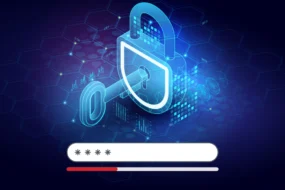The adoption of innovative technologies such as LED projectors has become increasingly important for schools and institutions as the world of education continues to evolve. These gadgets could change the way students and teachers engage with one another, making learning more interesting, immersive, and successful. The impact of developing LED projector technologies, including 3D projections, interactive touch screens, ultra-short throw projectors, and their applications in remote and hybrid learning, is examined in this article.
3D Projection Technology: Bringing Learning to Life

3D projection technology has the potential to completely transform the learning experience by adding a new dimension to educational content. Students can now encounter vivid pictures that leap out from the screen using specialist glasses or projection systems, making learning more exciting and memorable. This technique has been especially useful in teaching complex disciplines like anatomy, engineering, and architecture, where a three-dimensional perspective can substantially improve understanding.
While 3D projections can increase student engagement significantly, there are some potential challenges and limitations to consider. When using 3D glasses, some students may experience discomfort or motion sickness, and not all educational content may be available in 3D format. However, with ongoing technological advancements, these issues are expected to be addressed soon.
Interactive Touch Screens: A Gateway to Collaborative Learning

The combination of touch screens and LED projectors has provided new opportunities for collaboration and active learning. Students can now interact with displayed content by touching, dragging, or writing on the screen, allowing them to participate more effectively in group activities and brainstorming sessions. This technology also enables teachers to monitor student development in real time, allowing them to provide timely comments and support to students.
Interactive touch screens have been found to improve classroom management and more accessible for kids with special needs. For example, visually impaired pupils can benefit from the ability to expand text and images on the screen, while those with movement limitations can navigate through the content using touch screen gestures.
Ultra-Short Throw Projectors: Reinventing Classroom Spaces

In the realms of classroom design and teacher-student interactions, ultra-short throw projectors have emerged as game-changers. These technological devices can project huge, high-quality images from as close as a few inches away from the screen or wall. This adaptability enables more dynamic and engaging classroom setups, making it easier for teachers to tailor their teaching styles to different learning needs.
Ultra-short throw projectors’ increased image quality and reduced distractions can contribute to a more immersive learning environment. As a result, pupils are more likely to focus and pay attention during sessions.
Beyond the Classroom: LED Projectors in Remote and Hybrid Learning

LED projector technologies are not only improving in-person learning experiences but also facilitating remote and hybrid learning approaches. These devices can be used to stream live lectures, support video conferencing, and share multimedia content, effectively bridging the gap between in-person and online learning experiences. To ensure the effectiveness of remote and hybrid learning, difficulties such as equal access to technology, internet connectivity, and adapting instructional approaches for online environments must be addressed.
Preparing for the Future: Educator and Institutional Adaptation

To fully realize the potential of developing LED projector technologies, educators and institutions must be adaptable and open to change. This includes investing in teacher professional development programs, modernizing facilities and technology, and cultivating an innovative culture.
Conclusion
In conclusion, the transformative impact of upcoming LED projector technologies has the potential to radically alter the way students and teachers interact in the classroom. Educators and institutions may pave the path for a more dynamic, inclusive, and effective learning experience by embracing 3D projections, interactive touch displays, ultra-short throw projectors, and adapting to remote and hybrid learning models. As technology continues to advance at a rapid pace, it is critical for schools and educational institutions to stay current on new developments and to incorporate these innovations into their teaching practices as soon as possible.
They can ensure that students have the skills and information they need to thrive in an increasingly interconnected and technologically driven society by doing so. As the lines between traditional and digital learning settings become increasingly blurred, the incorporation of cutting-edge LED projector technologies will be critical in creating the future of education.
Finally, the success of these technologies will be determined by educators’ and institutions’ willingness to modify their teaching methods and embrace the advantages of innovation. The education sector can leverage the power of LED projector technologies to improve classrooms and empower students to reach their full potential by cultivating a culture of continuous learning and progress.
Continue reading:









